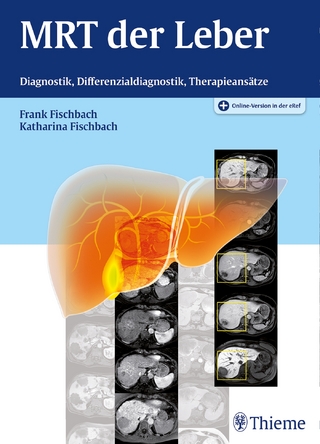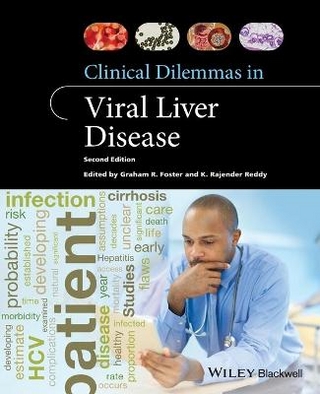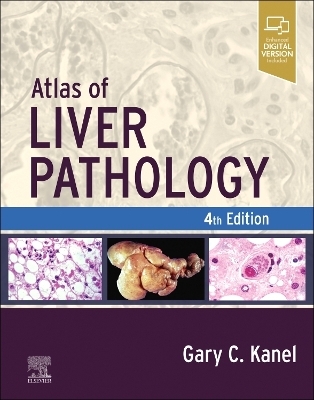
Hepatitis B Virus Research Focus
Seiten
2008
Nova Science Publishers Inc (Verlag)
978-1-60456-299-6 (ISBN)
Nova Science Publishers Inc (Verlag)
978-1-60456-299-6 (ISBN)
Hepatitis B virus (HBV) leads to diseases such as hepatitis, liver cirrhosis and hepatocellular carcinoma (HCC). This book says that HBV research should be focused more on animal models and clinical practice. It discusses the molecular approaches such as: antisense, oligonucleotides, and, ribozymes.
Hepatitis B virus (HBV), discovered in 1966, infects more than 350 million people in the world. The infection of HBV is a leading cause of chronic carriage of the virus and progressive liver diseases, such as hepatitis, liver cirrhosis and hepatocellular carcinoma (HCC). HBV consists of a circular, partially double-stranded DNA molecule of 3.2 kb in length, which contains four overlapping reading frames that code for surface proteins (HBsAg), core proteins (HBcAg/HBeAg), the viral polymerase, and the transcriptional transactivator X protein. Chronic hepatitis appears to be due to a suboptimal cellular immune response that destroys some of the infected hepatocytes and does not purge the virus from the remaining infected hepatocytes, thereby permitting the persisting virus to trigger a chronic indolent necroinflammatory liver disease that sets the stage for development of HCC. However, the mechanisms responsible for malignant transformation in chronic HBV infection are not well defined, and both viral and host factors have been implicated in the process. All cases of HCC occur after many years of chronic hepatitis which could, theoretically, provide the mitogenic and mutagenic environment to precipitate random genetic and chromosomal damage, and lead to the development of HCC. Hepatitis B virus X protein (HBx), an important transforming inducer, plays a crucial role in HCC development. HBx has the capability to influence a variety of signal transduction pathways within the cells. Monitoring of the HBV genotypes and antibody to Hepatitis B x antigen (anti-HBx) are significant for predicting early diagnosis of liver cirrhosis and HCC. HBV and Hepatitis C virus or HIV coinfections can accelerate the course of chronic liver disease and facilitate progression to cirrhosis and HCC. As for therapy of liver diseases, five drugs are now FDA-approved for the treatment of HBV, including interferon (IFN), lamivudine, adefovir, entecavir, and peginterferon alfa-2a. Moreover, the prevention for HBV infection is very important. It is likely that the most important outcome of the research on HBV has been the invention, development, and application of the vaccine against HBV. However, at present most investigators focus on basic research rather than practical applications. The HBV research should be focused on animal models and clinical practice. The technology update in HBV research and the multisubject combination may be attached importance to next a few decades. Some molecular approaches, such as antisense, oligonucleotides, ribozymes, RNA interference targeting HBV mRNA, are available in antiviral therapies.
Hepatitis B virus (HBV), discovered in 1966, infects more than 350 million people in the world. The infection of HBV is a leading cause of chronic carriage of the virus and progressive liver diseases, such as hepatitis, liver cirrhosis and hepatocellular carcinoma (HCC). HBV consists of a circular, partially double-stranded DNA molecule of 3.2 kb in length, which contains four overlapping reading frames that code for surface proteins (HBsAg), core proteins (HBcAg/HBeAg), the viral polymerase, and the transcriptional transactivator X protein. Chronic hepatitis appears to be due to a suboptimal cellular immune response that destroys some of the infected hepatocytes and does not purge the virus from the remaining infected hepatocytes, thereby permitting the persisting virus to trigger a chronic indolent necroinflammatory liver disease that sets the stage for development of HCC. However, the mechanisms responsible for malignant transformation in chronic HBV infection are not well defined, and both viral and host factors have been implicated in the process. All cases of HCC occur after many years of chronic hepatitis which could, theoretically, provide the mitogenic and mutagenic environment to precipitate random genetic and chromosomal damage, and lead to the development of HCC. Hepatitis B virus X protein (HBx), an important transforming inducer, plays a crucial role in HCC development. HBx has the capability to influence a variety of signal transduction pathways within the cells. Monitoring of the HBV genotypes and antibody to Hepatitis B x antigen (anti-HBx) are significant for predicting early diagnosis of liver cirrhosis and HCC. HBV and Hepatitis C virus or HIV coinfections can accelerate the course of chronic liver disease and facilitate progression to cirrhosis and HCC. As for therapy of liver diseases, five drugs are now FDA-approved for the treatment of HBV, including interferon (IFN), lamivudine, adefovir, entecavir, and peginterferon alfa-2a. Moreover, the prevention for HBV infection is very important. It is likely that the most important outcome of the research on HBV has been the invention, development, and application of the vaccine against HBV. However, at present most investigators focus on basic research rather than practical applications. The HBV research should be focused on animal models and clinical practice. The technology update in HBV research and the multisubject combination may be attached importance to next a few decades. Some molecular approaches, such as antisense, oligonucleotides, ribozymes, RNA interference targeting HBV mRNA, are available in antiviral therapies.
Preface; Molecular Epidemiology; Virologic Characteristics; Immunopathogenesis of HBV Infection; Prevention and Therapy of Liver Diseases; Conclusion; Index.
| Zusatzinfo | Illustrations |
|---|---|
| Verlagsort | New York |
| Sprache | englisch |
| Maße | 230 x 155 mm |
| Gewicht | 268 g |
| Themenwelt | Medizinische Fachgebiete ► Innere Medizin ► Hepatologie |
| Medizin / Pharmazie ► Medizinische Fachgebiete ► Mikrobiologie / Infektologie / Reisemedizin | |
| ISBN-10 | 1-60456-299-4 / 1604562994 |
| ISBN-13 | 978-1-60456-299-6 / 9781604562996 |
| Zustand | Neuware |
| Haben Sie eine Frage zum Produkt? |
Mehr entdecken
aus dem Bereich
aus dem Bereich
Diagnostik, Differenzialdiagnostik, Therapieansätze
Buch (2016)
Thieme (Verlag)
101,00 €
Buch | Hardcover (2023)
Elsevier - Health Sciences Division (Verlag)
259,95 €


